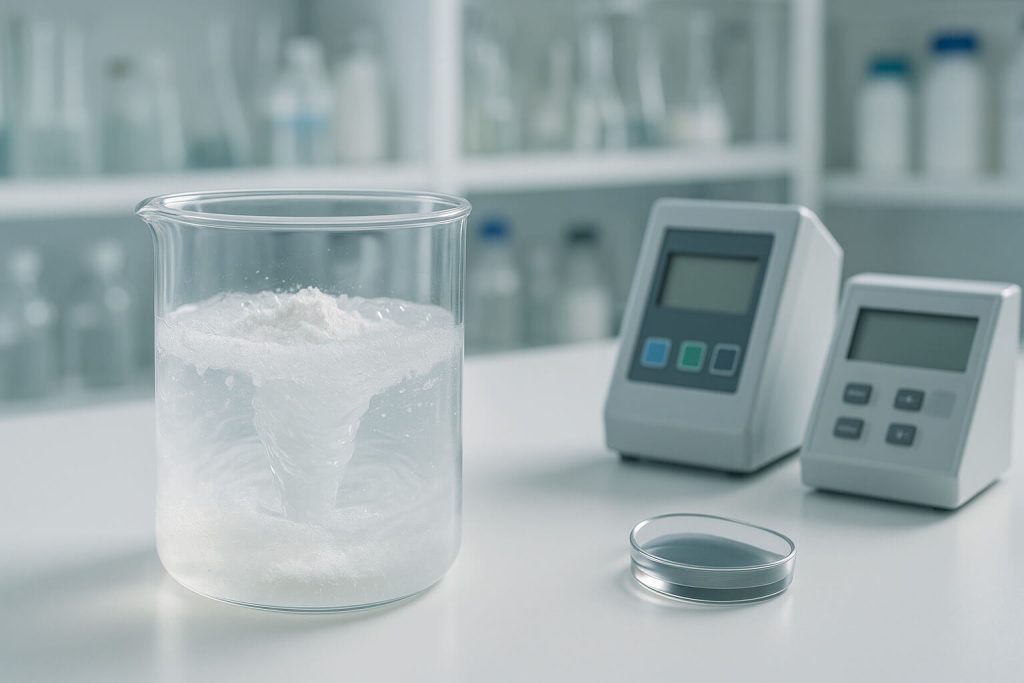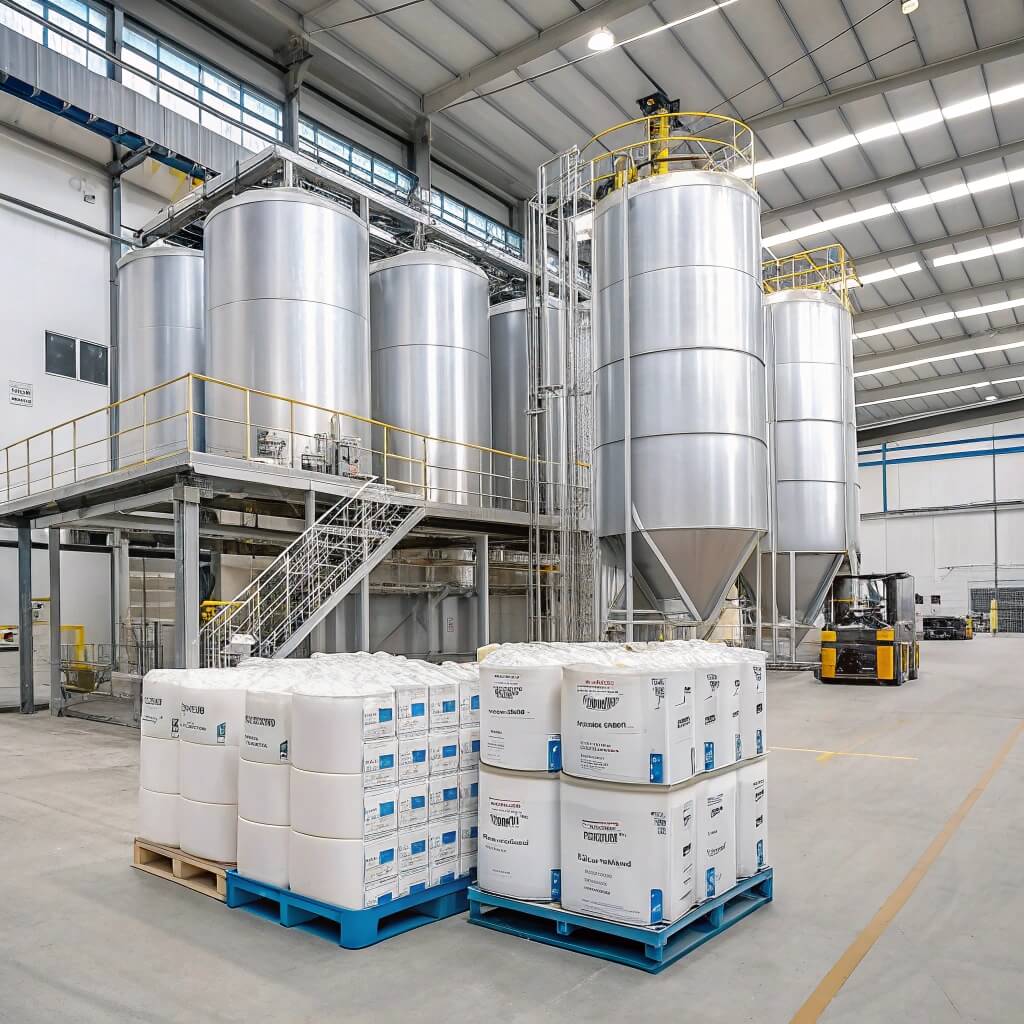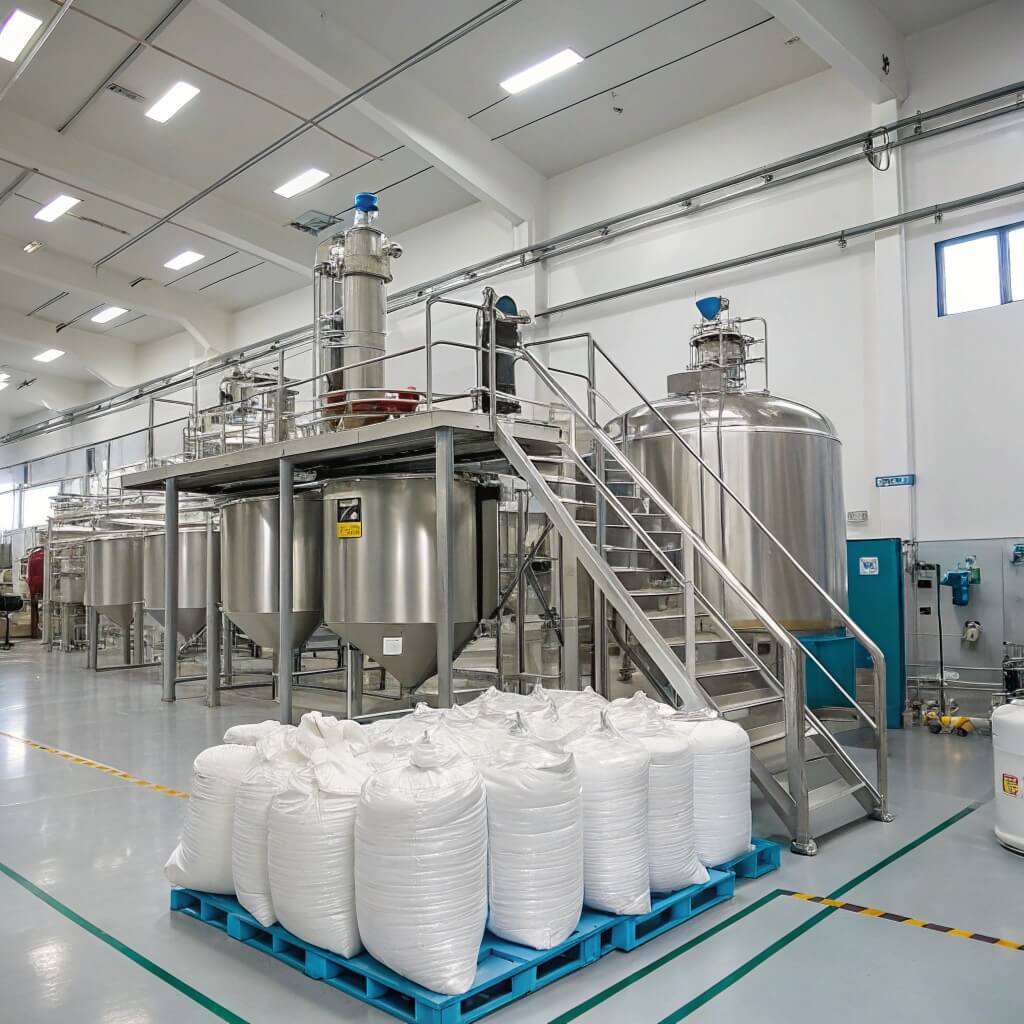When it comes to selecting Hydroxypropyl Methylcellulose (HPMC) for industrial applications, understanding the factors that affect its viscosity is essential. HPMC is used in a variety of industries, including construction, pharmaceuticals, and food production. Its viscosity directly impacts the functionality and effectiveness of products that use HPMC as a key ingredient. In this article, we’ll explore the various factors that influence the viscosity of HPMC and how you can optimize its use for your business applications.

1. What is HPMC and Why Does Its Viscosity Matter?
Hydroxypropyl Methylcellulose (HPMC) is a water-soluble polymer derived from cellulose. It’s used in many industries due to its ability to modify viscosity, provide stability, and act as a binder or emulsifier. But here’s the kicker – the viscosity of HPMC plays a huge role in determining the performance of the final product, making it crucial to understand how viscosity impacts its applications.
In construction, HPMC is used in products like tile adhesives and mortars. Viscosity directly impacts the workability, water retention, and spreadability of these products. Higher viscosity HPMC will allow for a thicker, more stable formulation that won’t run off surfaces, which is critical for adhesive performance.
In pharmaceuticals, HPMC’s viscosity ensures that tablets release their active ingredients at the desired rate. The viscosity controls the dissolution rate, ensuring that the drug is released slowly and steadily, improving the therapeutic effect.
In food production, HPMC is used as an emulsifier and stabilizer. The viscosity affects the texture and shelf life of products like salad dressings, sauces, and ice cream. The ideal viscosity ensures these products remain smooth and stable over time.
Viscosity is the key property that determines whether HPMC will provide the desired texture, stability, and performance in your products, making it an essential factor to consider in your formulation process.
| Промышленность | Приложение | Benefit of Viscosity |
|---|---|---|
| Строительство | Mortars, adhesives, plaster | Workability, open time |
| Фармацевтика | Tablets, capsules | Consistency, controlled release |
| Еда | Emulsions, sauces, dressings | Texture, stability |
2. How Does Temperature Affect the Viscosity of HPMC?
Temperature is one of the most influential factors when it comes to the viscosity of HPMC. Ready for the good part? As the temperature increases, the viscosity of HPMC generally decreases. This is particularly important when considering how HPMC will behave under different environmental conditions or during manufacturing processes.
In many applications, such as pharmaceuticals and construction, the viscosity of HPMC needs to be maintained at specific levels to ensure the desired consistency and performance. Temperature fluctuations can impact the flow properties of HPMC, especially when it is used in water-based solutions. A decrease in viscosity may cause the material to become too runny, affecting its application properties.
For example, when preparing mortar with HPMC in construction, high temperatures may cause the mixture to become too liquid, making it difficult to apply. On the other hand, lower temperatures might cause the material to thicken too much, making it harder to work with.
Understanding the temperature sensitivity of HPMC and monitoring the temperature during application can help ensure that the viscosity remains consistent and within the desired range.
| Temperature Range (°C) | Эффект вязкости | Приложения |
|---|---|---|
| 10 – 30 | Более высокая вязкость | Pharmaceuticals, food production |
| 30 – 50 | Умеренная вязкость | Construction, cosmetics |
| 50 – 70 | Decreased viscosity | Food preparation, coatings |
3. How Does the Concentration of HPMC Influence Its Viscosity?
The concentration of HPMC in a solution directly influences its viscosity. What’s the real story? As the concentration of HPMC increases, the solution becomes thicker. This is a critical factor when determining the right viscosity for a given application. A higher concentration of HPMC leads to more polymer chains in the solution, resulting in increased resistance to flow.
In the construction industry, higher concentrations of HPMC are often used to improve the workability and stability of materials like adhesives and mortars. The increased viscosity ensures that the product doesn’t run off surfaces and remains thick enough to provide lasting adhesion. In pharmaceuticals, concentration can affect the release rate of active ingredients. A higher concentration of HPMC in tablet formulations typically results in a slower, more controlled release.
However, while increasing the concentration of HPMC can help achieve higher viscosity, it also requires careful formulation to ensure the solution remains workable and functional. Too high a concentration might make the product difficult to handle or apply.
| Concentration (%) | Влияние на вязкость | Приложение |
|---|---|---|
| 1 – 2 | Low viscosity, quick application | Food, pharmaceutical coatings |
| 2 – 5 | Умеренная вязкость | Mortar, tile adhesives |
| 5 – 10 | High viscosity, improved stability | Таблетки с контролируемым высвобождением |
4. What Role Does Molecular Weight Play in HPMC Viscosity?
Molecular weight is another key factor in determining the viscosity of HPMC. But here’s the kicker – the molecular weight of HPMC affects how the polymer chains interact with each other and with solvents. Higher molecular weight leads to longer polymer chains, which increases viscosity. These longer chains create a more gel-like structure that resists flow, which is beneficial in applications where thicker solutions are required.
For example, in controlled-release pharmaceuticals, higher molecular weight HPMC ensures that the drug is released slowly over time. This slower release rate is essential for maintaining therapeutic efficacy. In construction, higher molecular weight HPMC provides thicker, more stable mixtures for mortar and adhesives, improving their ability to bond and retain water.
On the flip side, lower molecular weight HPMC provides lower viscosity, which can be more suitable for applications requiring faster dissolution or thinner solutions. Understanding the right molecular weight for your needs is key to optimizing product performance.
| Молекулярный вес | Влияние на вязкость | Приложения |
|---|---|---|
| Низкий молекулярный вес | Меньшая вязкость | Quick-dissolving pharmaceuticals |
| Высокий молекулярный вес | Higher viscosity, slower release | Controlled-release tablets, construction adhesives |
5. How Does pH Influence the Viscosity of HPMC?
pH levels have a significant impact on the viscosity of HPMC solutions. Ready for the good part? HPMC is a non-ionic polymer, which means it is generally stable across a wide range of pH values. However, extreme pH conditions, either too acidic or too alkaline, can cause HPMC to lose its viscosity or undergo a chemical change that alters its properties.
In the pharmaceutical industry, the pH of the formulation can influence the stability and dissolution rate of HPMC-based products. For example, in tablet formulations, the pH can affect how HPMC interacts with the other excipients, potentially altering the release rate of the active ingredients.
In food applications, maintaining the right pH ensures that the viscosity remains stable, especially in emulsions and dressings. A change in pH could result in separation or inconsistent texture, which could affect the consumer experience.
| Диапазон pH | Эффект вязкости | Приложения |
|---|---|---|
| 4 – 7 | Стабильная вязкость | Фармацевтика, продукты питания |
| < 4 | Decreased viscosity | Sensitive formulations |
| > 7 | Viscosity reduction | Construction, some food products |
6. How Does Ionic Strength Affect HPMC Viscosity?
The ionic strength of a solution can also affect the viscosity of HPMC. What’s the real story? When salts or other ions are present in the solution, they can alter the interaction between HPMC molecules. Higher ionic strength typically leads to a decrease in viscosity, as the ions interfere with the hydrogen bonds that hold the polymer chains together.
In construction, where HPMC is used to improve mortar and adhesive properties, high ionic strength could reduce viscosity, making the product too runny and difficult to apply. In food and pharmaceutical applications, controlling the ionic strength of HPMC solutions is crucial to maintaining consistency and ensuring proper functionality.
By adjusting the concentration of salts or other ions in the solution, manufacturers can control viscosity and tailor it to meet the specific needs of the application.
| Ionic Strength | Эффект вязкости | Приложения |
|---|---|---|
| Low Ionic Strength | Более высокая вязкость | Pharmaceuticals, cosmetics |
| High Ionic Strength | Меньшая вязкость | Construction, certain food products |
7. How Does HPMC’s Degree of Substitution Affect Its Viscosity?
The degree of substitution refers to the number of hydroxypropyl or methyl groups attached to the cellulose backbone of HPMC. What’s the kicker here? The higher the degree of substitution, the higher the viscosity. This is because the added groups increase the hydrophilicity of the polymer, allowing it to interact more with water, resulting in thicker solutions.
In pharmaceutical formulations, a high degree of substitution ensures the uniform distribution of active ingredients and allows for controlled-release properties. In food production, it improves texture and consistency, ensuring that emulsions stay stable. Understanding the degree of substitution can help manufacturers choose the right grade of HPMC for their specific needs.
| Степень замещения | Влияние на вязкость | Приложения |
|---|---|---|
| Низкий | Меньшая вязкость | Quick-dissolving formulations |
| Высокий | Выше |
viscosity, better stability | Controlled-release tablets, food stabilizers |
8. What Impact Does HPMC Formulation Have on Viscosity?
Formulation is a key factor that can alter the viscosity of HPMC. But here’s the kicker – even small changes in formulation can significantly affect how HPMC behaves. The solvents, additives, and other ingredients used in the formulation play a crucial role in determining the viscosity of HPMC solutions.
In construction, additives like plasticizers and stabilizers are used to modify the viscosity, making the mixture easier to apply without compromising its stability. In pharmaceuticals, formulations are designed to ensure that HPMC has the correct viscosity to control the release of active ingredients. In food, adjusting the formulation can help achieve the desired texture and stability for products like sauces and dressings.
Understanding the impact of formulation on viscosity allows businesses to optimize their products for the best performance.
| Formulation Components | Влияние на вязкость | Приложения |
|---|---|---|
| Plasticizers, stabilizers | Thicker solutions, improved workability | Construction, cosmetics |
| Solvents, additives | Adjusted viscosity for release rate | Фармацевтика, продукты питания |
9. How Do Mixing and Shear Rates Affect the Viscosity of HPMC?
Mixing and shear rates can have a dramatic effect on the viscosity of HPMC. Ready for the good part? Under different shear conditions, the viscosity of HPMC solutions can increase or decrease, depending on the formulation and application. High shear rates generally result in lower viscosity as the polymer chains are stretched and aligned.
In applications like pharmaceuticals, where uniformity is key, shear rates can influence how well HPMC dissolves and how it performs in the formulation. In construction, too much shear during mixing could cause HPMC to lose its viscosity, making the mortar or adhesive too fluid.
By adjusting mixing techniques and shear rates, manufacturers can fine-tune the viscosity to ensure optimal performance.
| Скорость сдвига | Эффект вязкости | Приложения |
|---|---|---|
| Low Shear Rate | Более высокая вязкость | Фармацевтика, продукты питания |
| High Shear Rate | Меньшая вязкость | Строительство, клеи |
10. How Can You Control and Optimize HPMC Viscosity for Your Applications?
Controlling and optimizing HPMC viscosity is essential to achieving the desired product performance. Ready for the good part? Manufacturers can adjust viscosity by modifying HPMC concentration, molecular weight, formulation, and environmental factors like temperature and pH. Regular testing is also essential to ensure that the viscosity remains consistent from batch to batch.
In construction, controlling viscosity helps achieve better workability and longer open times. In pharmaceuticals, it ensures the right drug release profile. For food production, optimizing viscosity ensures smooth textures and stable emulsions.
By adjusting these parameters and testing regularly, you can ensure that HPMC meets the viscosity requirements for your specific application.
| Optimization Method | Эффект | Приложения |
|---|---|---|
| Adjust concentration | Changes viscosity level | Фармацевтика, строительство |
| Modify formulation | Controls texture and stability | Продукты питания, косметика |
| Monitor temperature/pH | Ensures consistency | Все отрасли |
Заключение
In conclusion, understanding the factors that affect the viscosity of HPMC is crucial for optimizing its use in industrial applications. Whether you’re in construction, pharmaceuticals, or food production, viscosity plays a pivotal role in ensuring that products perform as expected. By understanding and controlling the various factors such as temperature, concentration, molecular weight, and formulation, you can ensure that HPMC provides the desired consistency, stability, and functionality for your specific needs.
Раздел часто задаваемых вопросов
В1: Что такое ГПМЦ?
А1: HPMC (Hydroxypropyl Methylcellulose) is a cellulose derivative used in various industries for its properties as a binder, thickener, emulsifier, and stabilizer. It’s commonly found in construction materials, pharmaceuticals, and food products.
В2: How does temperature affect the viscosity of HPMC?
А2: Temperature has a significant impact on the viscosity of HPMC. Generally, as temperature increases, viscosity decreases, which can affect the flow properties and performance of HPMC in different applications.
В3: How does concentration influence the viscosity of HPMC?
А3: The concentration of HPMC directly affects its viscosity. Higher concentrations result in thicker solutions, while lower concentrations lead to more fluid formulations. This is crucial for adjusting the viscosity to suit specific industrial applications.
В4: What is the degree of substitution in HPMC, and how does it affect viscosity?
А4: The degree of substitution refers to the extent to which the cellulose backbone of HPMC has been modified with hydroxypropyl or methyl groups. This modification impacts solubility, viscosity, and overall performance in various formulations.
В5: How can I control the viscosity of HPMC for my application?
А5: You can control the viscosity of HPMC by adjusting its concentration, formulation, molecular weight, and the additives used. Regular testing and quality control are essential to ensure the viscosity meets the specific needs of your application.




